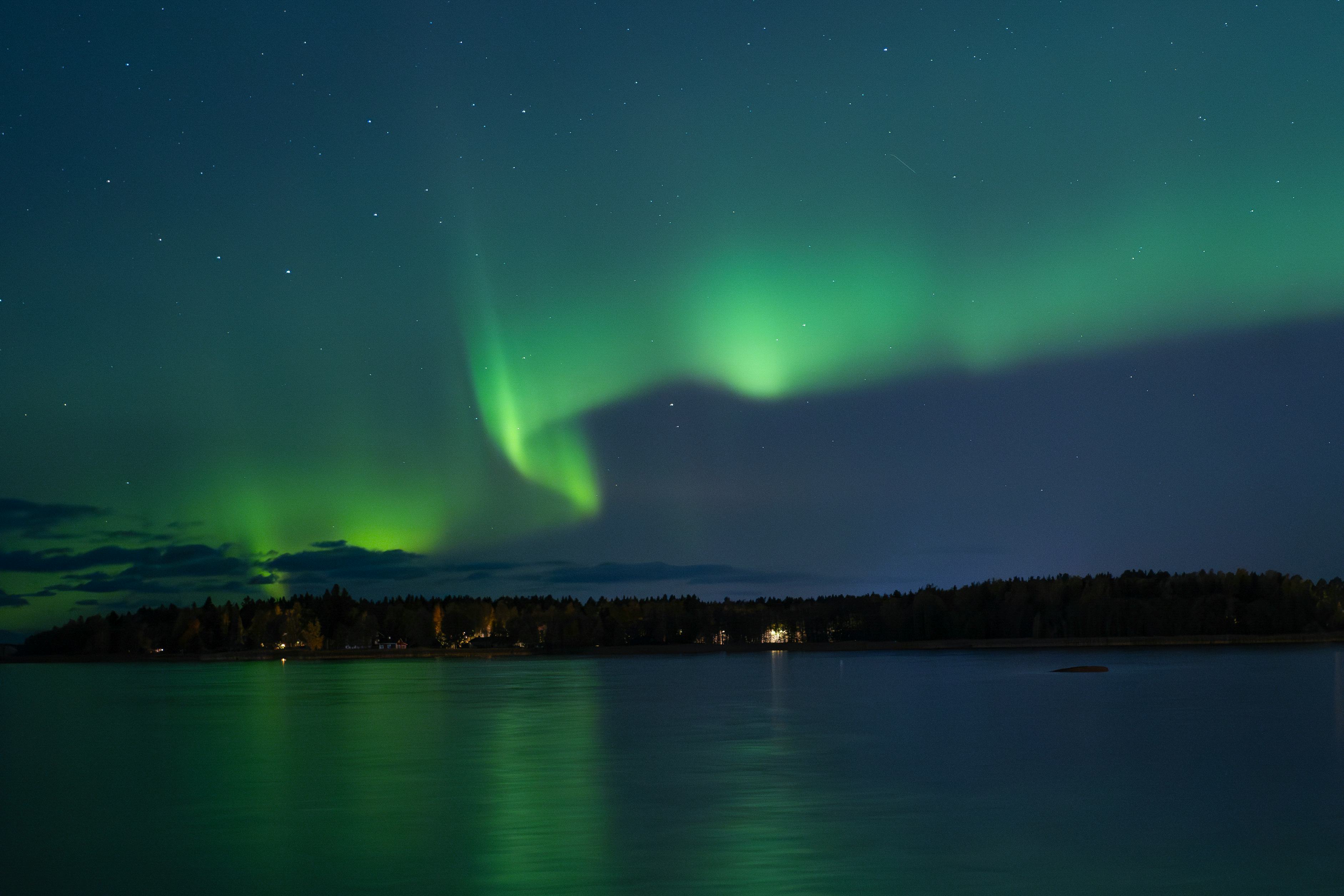
People in the northernmost states may have a chance to see auroras glowing in the northern sky tonight.
A blob of electrically-charged gas burped out by the Sun over the weekend. It will brush past Earth’s magnetic field between 7 PM and 10 PM Eastern Time on Wednesday night, setting off an aurora that could be visible as far south as South Dakota, Wisconsin, and Michigan.
Because this particular coronal mass ejection (the technical name for what happens when the Sun belches out part of its own corona into space) won’t hit our magnetic field head-on, tonight’s aurora won’t reach as far south as other recent displays, and the odds of a dramatic show are small. But this won’t be our last chance to catch the Northern Lights in action. Here’s a quick look at why we’ve been seeing aurora so often in recent months.

Why Are We Seeing So Many Auroras Lately?
Auroras happen when fast-moving, electrically-charged gas, called plasma, gets caught up in Earth’s magnetic field. Bits of plasma collide with air in Earth’s upper atmosphere, releasing bright bursts of light. The greenish hue of most aurora comes from plasma colliding with oxygen molecules 60 to 125 miles above the ground; higher-altitude oxygen glows red. At slightly lower altitudes, nitrogen emits a pink or purple glow.
Other planets have auroras of their own, which look different depending on the planet’s atmosphere.
And the plasma that paints the sky with colorful light comes from the fitful stirring of our Sun. The lines of the Sun’s magnetic field are constantly shifting, and that occasionally causes the Sun’s surface to erupt in a burst of light, heat, and other radiation, called a solar flare. Some solar flares are powerful enough to bring along a glob of plasma from the Sun’s outer layers: a coronal mass ejection. When the plasma from a CME hits Earth’s magnetic field, we get to see an aurora (if we’re lucky).
In other words, these dazzling light shows are CMEs pelting our planet’s magnetic shielding. And they’ve been happening a lot more often in the last several months, because our Sun is in its feisty era (by which we mean it’s in the midst of a Solar Maximum) until sometime in 2026.
The Sun’s restless magnetic field actually flips every 11 years, give or take a few. When that happens, it restarts a cycle in which the Sun gets more, and then less, active over a period of several years based on the shifting strength of its magnetic field, which interacts with the Sun’s plasma to cause solar flares, CMEs, and sunspots. During the most active part of the solar cycle, called a Solar Maximum, flares and CMEs are much more common, which means we get a lot more chances to see auroras.
And the current Solar Maximum is just getting started; NASA doesn’t expect it to peak until sometime in 2025.
Aurora Viewing Tips
Find the darkest spot you can, far from the light pollution of nearby cities. Turn off your headlights and turn down the brightness on your phone. Give your eyes about half an hour to adjust to the darkness, then look toward the northern horizon.
Typically, Inverse tells you to turn your phone completely off, or leave it in your pocket, for stargazing, but you’re going to need it for the aurora. Your phone camera may have a better chance of catching the aurora in action than your eyes, because the camera can collect more light — which means a dim aurora may show up in a picture even though you couldn’t see it in the sky. Use settings that give you the longest exposure (which means your camera spends more time collecting light) for the best result; night mode is your friend.
People across a northern swath of the U.S. — Idaho, Maine, Michigan, Minnesota, Montana, North Dakota, South Dakota, Washington, and Wisconsin — will have the best chance to see the aurora this time around (and even then, Jamie Carter at Forbes warns that it’s a small chance). The rest of us will have to catch the next one, but the ongoing Solar Maximum practically guarantees that there will be a next one.







